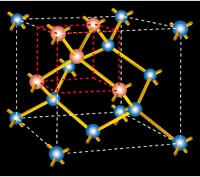Difference between revisions of "Positive outcome bias"
m (Text replacement - "http://" to "https://") |
|||
| Line 5: | Line 5: | ||
The result of valence effects may be called [[wishful thinking]]. However, in some cases, positive outcome bias may actually alter events in some way so that it indeed results in a positive outcome. Examples of this have been known to occur in [[war]], when commanding officers have inspired their soldiers such that they are able to emerge victorious. | The result of valence effects may be called [[wishful thinking]]. However, in some cases, positive outcome bias may actually alter events in some way so that it indeed results in a positive outcome. Examples of this have been known to occur in [[war]], when commanding officers have inspired their soldiers such that they are able to emerge victorious. | ||
==Citation== | ==Citation== | ||
| − | # Nigel Taylor (2000-01-18). "[ | + | # Nigel Taylor (2000-01-18). "[https://www.google.com/url?sa=t&ct=res&cd=2&url=http%3A%2F%2Fwww.sias.org.uk%2Fdata%2Fpapers%2FBehaviouralFinance%2FDownloadPDF&ei=Srw4RpzQLpPEiwGhu7TkDA&usg=AFrqEze1605hIFtf9inCo5FHPZZTeq-DTQ&sig2=lg65w26FFzNGNf232y9ToA Making Actuaries Less Human: Lessons from Behavioral Finance" (PDF). The Staple Inn Actuarial Society]. |
==References== | ==References== | ||
* David Rosenhan & Messick, S. (1966). Affect and expectation. ''Journal of Personality and Social Psychology'' '''3''', 38-44. | * David Rosenhan & Messick, S. (1966). Affect and expectation. ''Journal of Personality and Social Psychology'' '''3''', 38-44. | ||
| − | * Nigel Taylor (2000). [ | + | * Nigel Taylor (2000). [https://www.google.com/url?sa=t&ct=res&cd=2&url=http%3A%2F%2Fwww.sias.org.uk%2Fdata%2Fpapers%2FBehaviouralFinance%2FDownloadPDF&ei=Srw4RpzQLpPEiwGhu7TkDA&usg=AFrqEze1605hIFtf9inCo5FHPZZTeq-DTQ&sig2=lg65w26FFzNGNf232y9ToA Making Actuaries Less Human]. Staple Inn Actuarial Society, 15. ''For picking a card see section 6.2 on page 15.'' |
[[Category: Psychology]] | [[Category: Psychology]] | ||
Latest revision as of 02:37, 13 December 2020
The Valence effect in prediction is the tendency for people to overestimate the likelihood of good things happening rather than bad things. Valence refers to the positive or negative emotional charge related to a given contingency. In one experiment, participants assigned a higher probability to picking a card that had a smiling face on its reverse side than one which had a frowning face.[1] Additionally, some have reported a valence effect when predictions demonstrate the likelihood of positive events happening to ourselves relative to others and is an example of self-serving bias.
The result of valence effects may be called wishful thinking. However, in some cases, positive outcome bias may actually alter events in some way so that it indeed results in a positive outcome. Examples of this have been known to occur in war, when commanding officers have inspired their soldiers such that they are able to emerge victorious.
Citation
- Nigel Taylor (2000-01-18). "Making Actuaries Less Human: Lessons from Behavioral Finance" (PDF). The Staple Inn Actuarial Society.
References
- David Rosenhan & Messick, S. (1966). Affect and expectation. Journal of Personality and Social Psychology 3, 38-44.
- Nigel Taylor (2000). Making Actuaries Less Human. Staple Inn Actuarial Society, 15. For picking a card see section 6.2 on page 15.
